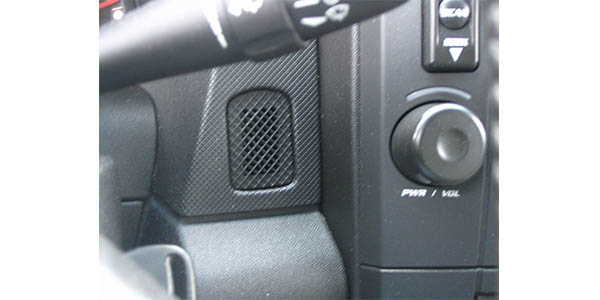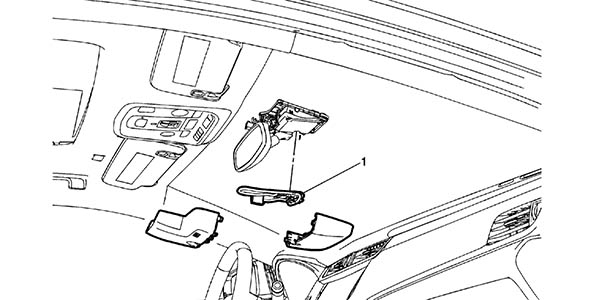
When a driver sets a temperature in the control head of an HVAC system, what does it mean to the vehicle? Seventy-two degrees could mean many different settings depending on the outside temperature, humidity and even the position of the sun.
When a passenger decides that 70 degrees is a better temperature for their zone, things get even more complicated. Automatic Temperature Control (ATC) systems require a complex array of internal and external sensors that include ambient air temperature sensors, interior temperature sensors, outlet duct and evaporator temperature sensors, pressure sensors, humidity sensors, blend door position sensors and sunload sensors.
Some vehicles also use passive infrared sensors mounted in the dash or an overhead console to monitor the body temperature of the vehicle’s occupants. This allows the system to fine-tune heating and cooling so everybody stays comfortable.
Temperature Sensors
To maintain a preset air temperature, an HVAC system will typically have one or more interior air temperature sensors, an ambient (outside) air temperature sensor, and possibly one or two sunload sensors. Also, some systems have temperature sensors in the ducts.
Interior air temperature sensors are usually simple, two-wire thermistors that change resistance with temperature, but some are infrared sensors that detect heat from the vehicle’s occupants. This type of thermistor usually has an aspirator tube that pulls air through the sensor when the blower fan is running. Others use a small electric fan for the same purpose. A plugged aspirator tube or inoperative fan will slow the sensor’s response to temperature changes.
Most air temperature sensors have a “negative temperature coefficient,” which means they lose resistance as the temperature goes up. A simple way to check this type of sensor is to use a blow dryer to heat the sensor. The resistance should drop as the sensor warms up.
Ambient air temperature sensors typically have a slow sample rate to even out variations in readings that may be sensed at different vehicle speeds. When the vehicle stops moving, heat can build up quickly around the sensor and could mislead the ATC module into thinking it’s getting hotter outside. So, most ATC modules only look at the ambient sensor input every couple of minutes instead of continuously. On some applications, the ATC module may even ignore input from the ambient sensor when the vehicle is not moving.
Solar Load Sensors
Many ATC systems also make use of a photo diode sunload sensor on the dash. This sensor allows the ATC system to increase cooling needs when the cabin is being heated by direct sunlight. On vehicles with dual-zone systems, there is often a separate sunload sensor for each side. Sunload sensors receive reference voltage from the ATC module and pass current when the light intensity reaches a certain threshold.
Some ATC systems have additional temperature sensors located on the evaporator and/or compressor to prevent evaporator icing and to regulate the operation of the compressor. Some Asian vehicles also have duct temperature sensors and heater core temperature sensors to further refine temperature control. These are usually found on the dual-zone ATC systems.
Humidity Sensors
The latest sensor to be incorporated into ATC systems is a humidity sensor. Humidity sensors are capacitance sensors that measure the amount of moisture in the air. The information from the sensor both regulates the volume of air projected onto the windows to reduce misting, and manages the humidity levels inside the car to enhance climate comfort. These sensors are typically mounted at the base of the rearview mirror.
From the data delivered by the humidity and temperature sensor, the HVAC system calculates the dew point temperature of the air. Some systems use an infrared sensor that remotely measures the windshield and side window temperatures as well.
The performance of the sensor can degrade over time and cause the sensor to malfunction and give false readings. If this happens, you will see a code stored in the HVAC module.
Air Quality Sensor
Air quality sensors can prevent harmful gases and unpleasant odors that can get into the car cabin when the vehicle is sitting in heavy traffic, passing through congested areas or driving through tunnels. The sensor signals the fresh air inlet door/ventilation flap to close when undesirable substances are detected. Cadillac, Audi and other luxury car manufacturers are using this sensor. This sensor is typically mounted behind the grill.
Carbon Dioxide Sensors
The 2015 Hyundai Genesis was the first car sold with a carbon dioxide sensor for the interior of the vehicle. Carbon dioxide emitted just by the vehicle occupants can build up to toxic levels inside a modern, sealed vehicle with the HVAC system in the recirculation position. These high levels of carbon dioxide can cause drowsiness.
In the past, this was not a problem because most vehicles leaked outside air into the vehicle. Today’s late-model vehicles deal with this issue by opening the recirculation door at set intervals to keep the levels of carbon dioxide down. Some drivers have noticed the opening of the door and think it is the A/C system failing. This usually happens on long trips with high exterior temperatures.
By monitoring the carbon dioxide levels, gradual introductions of outside air can be mixed with the recirculated air to minimize the change in outlet temperatures.
Some vehicle manufacturers get around the carbon dioxide problem by occasionally opening the recirculation door.
Article courtesy Underhood Service.
















